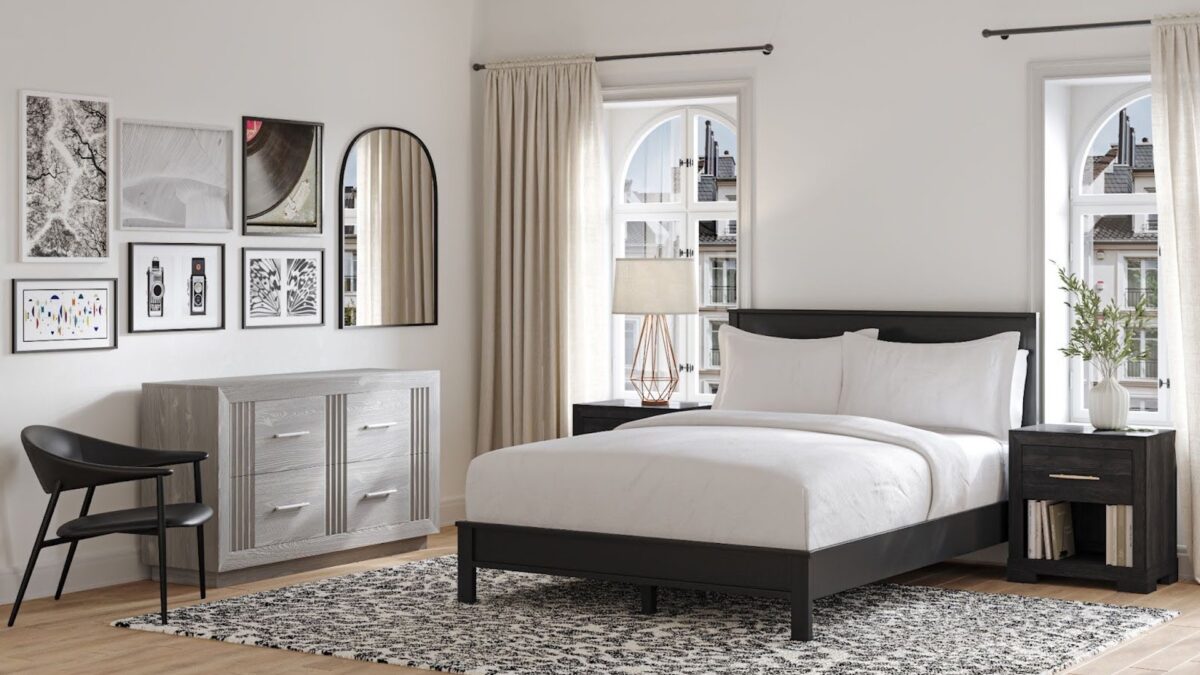For many, the hope is that SARS-CoV-2, the virus that causes COVID-19, will be contained with a cure that’s accessible for everyone. But even after this occurs, the face of events will likely be changed forever. When the use of face masks is more precautionary instead of mandated and being two feet apart instead of six feet, it’s still likely that we’ll still be singing “Happy Birthday” in our heads as we wash our hands and carrying two types of hand sanitizer in our car.
The memory of 2020 won’t quickly go away — and it shouldn’t. Events are crowded places and going forward, it’s good to plan with health and safety in mind. Attendance, aesthetics, outcomes — these are all very important things — but the future, including post-COVID events, for the time being, is going to be geared toward safety above all else.
Understanding Local Regulations and Orders
The Centers for Disease Control (CDC) specifically states that the size of gatherings should be based solely on the state and local regulations that govern the area. Large gatherings can pose a rather high risk when it comes to COVID-19 transmission, and because of this, during the lockdown phase of the pandemic, which was roughly between March and June of 2020, many gatherings and events were completely canceled throughout the United States. As areas began to open up, restrictions were slowly lifted, but in many municipalities, there are still regulations at the state and local level.
Whether you’re planning a backyard barbecue or a large indoor corporate function, you must be aware of state regulations, COVID-19 executive orders in your state, and any local regulations in the town or municipality where the event is to be held. This can require a bit of effort to track it all down, but typically most of this information is readily available on your city, county, and state’s official government websites. You may discover there are substantial size differences between indoor and outdoor capacity thresholds. For example, a state’s indoor capacity maximum maybe 25, but its outdoor capacity may allow you to have up to 100 guests. In colder months, this can be difficult, but not insurmountable.
Cleanliness and Sanitation
One of the most important things going forward in a post-COVID world is the cleanliness of the event space, regardless of whether it’s indoors or outdoors. Even a small event will require restroom facilities, so proper disinfecting and cleaning routines should be strictly followed to ensure guests’ health and safety.
Understanding CDC Regulations
One of the best things you can do as an event planner and event space owner is to familiarize yourself with CDC regulations. This information is ever-changing as we learn more about the coronavirus, so those who work in the events field should bookmark the CDC site as of yesterday. While the information within the page is likely to change over time, there is a dedicated page regarding events and safety, entitled “Considerations for Events and Gatherings,” Those planning events or hosting them should peruse these pages, as there is specific guidance on maintaining healthy environments for guests and staff, maintaining healthy operations and what to do if someone appears to be sick.
Choosing the Proper Venue
When it comes to choosing the proper venue, outdoor spaces are more preferable — and safer — than indoor ones, at least for now. Erin Bromage, a biology professor and immunologist at the University of Massachusetts-Dartmouth, says that “[research points to outside events being] definitely safer.” While it hasn’t yet been peer-reviewed, a Japanese study of 100 cases pointed to indoor gatherings facilitating secondary transmission of coronavirus. In other words, COVID-19 has a higher transmission rate in indoor spaces where there are people in close quarters. During colder months, using outdoor spaces may be a challenge, but it’s nothing a few space heaters can’t solve.
As an event planner, what you’re in search of is a venue that’s on board with COVID-19 CDC guidelines and has several different options and backup options for your event. Prior to booking, you want to have a detailed look at its cleaning procedures, what setup will look like for the event, how it’s handled if someone on staff is sick, doesn’t feel well or has been exposed. Understand the venue’s cancellation policies too. You’ll likely have many more questions beyond those — event venues are probably anxious to book, so don’t settle if your expectations are not met.
Sanitizing During the Event
One of the most prolific changes in a post-COVID world is the amount of hand sanitizer and disinfectant for events that any party or event should have. Ideally, common spaces, such as restrooms, should be disinfected even while the event is taking place. This feels awkward, but it’s for everyone’s safety. Going back to choosing a proper venue, finding one with dedicated restroom attendants is a definite plus. There should also be numerous amounts of hand sanitizer stations placed throughout the venue. If this is a marketing event, this is a perfect opportunity to extend your brand on small hand sanitizer bottles.
Event Design and Social Distancing
It’s expected now that because of the COVID-19 pandemic, people who don’t live together should stay at least six feet apart from one another. But, an event is different than a grocery store — you can’t design an event to have people wait on stickers six feet apart to get in the bathroom or in the front door, or can you?
Self Check-in for Events
A novel software idea that’s emerging in a post-COVID world is self check-in for events. So, prior to the pandemic, if you were on the guest list, you would go to the hostess or greeter, give your name, and be directed inside. Perhaps there would be a line behind you. There might be a coat check. No matter what — there would be a bit of a logjam at the front door. If you provide your guests with an app for the specific event (or a website) that allows them to self check-in, then that’s one less contact with a stranger that they need to make. The CDC’s guidance specifically says to eliminate lines or queues in waiting areas and to use contactless communication options as much as possible to lower the risk of transmission.
Social Distancing While Eating
If you think about events you’ve attended in the past, you may have served yourself at a buffet and were perhaps seated family-style. For now, imagine cocktail tables that seat two, or round-top tables that seat a maximum of groups of four. For more familial get-togethers, you’ll see people co-hosted by family, and for corporate events, more by the department. This is to minimize unnecessary contact with acquaintances or strangers. The change won’t likely be forever, but it’s a good way to keep people six feet apart for now. The only time guests should be unmasked at an event, for the near future, is at their table while eating.
How to Manage Restrooms
At an event, a restroom is going to be one of the most high-traffic areas and one of the spots you can’t make contactless, unlike check-in. The best thing to do, in this case, is to find a venue that has a dedicated restroom attendant or have two on staff as part of your event team. Each bathroom should have a maximum occupancy, and it’s up to the attendant to enforce that. This way, the bathroom cannot overcrowd during an event. Post signs to remind participants to maintain a distance of at least six feet when in a queue for the restroom as well as proper handwashing techniques. Also, restroom stalls, sinks, hand dryers, towel, and soap dispensers, countertops, and door handles should be disinfected throughout the event using EPA-approved disinfectants.
Hosting a Hybrid Event
The CDC recommends hosting hybrid events if possible, and this is something you’ll see more and more of as more states begin reopening phases and events are allowed to reconvene. A hybrid event allows you to still have an in-person event along with a far-reaching scope to those tuning in remotely.
Capping Attendance
Most states, towns, and municipalities have specific rules regarding attendance, with steep fines for those who choose to ignore the regulations. Because of this, you’ll see many hybrid events cropping up. You may opt for a hybrid event in light of your municipality’s regulations, an in-person event meant for a smaller crowd or a remote-only event. Event regulations can change suddenly, so be prepared with alternative plans should something change overnight.
Hybrid Events
If you decide to host a hybrid event — whether by surprise or if it was the plan all along — make the guests at home feel included as well. You can create a hashtag on social media (a great idea for corporate), or project a video meeting room onto a wall so everyone can see each other. You’ll see more hybrid events cropping up over time, as some guests will choose to stay home because of pre-existing conditions or because they simply feel safer. Always offer an opt-in for a remote event if you’re able because it does give you more reach with your audience if it’s a company event and helps make family and friends feel included if it’s a social event.
Making the Most of a Remote Event
In a post-COVID world, some events are simply going to stay remote for the time being. This goes for work, concerts, even family reunions. Many people still simply don’t feel safe enough to attend an event, and that’s absolutely okay. Make the most of a remote event by trying some virtual team-building exercises or virtual party games. You may be a bit tired of using Zoom at this point, but not all meetings have to be dry. If it was intended to be a party in the first place, it’s fine to have a remote one.
Using Regulations for Your Event
There’s likely some hesitation for event planners and venue owners when it comes to following regulations and enforcing them, but expect to see successful professionals exhibiting a zero-tolerance policy. If you knew an outbreak potentially stemmed from your event, you’d feel awful and may be liable, so keep this in mind when it comes to regulations.
Using Temperature Checks
There are likely some regulations you must follow to the letter, such as the use of face masks if your state or town has a mandate and attendance maximums. But many other regulations are “strongly suggested” by the CDC. In other words, expect to see them if you attend an event, and you should employ them at your next event. Many events are using temperature checks. There are two schools of thought here: If you require a temp check at the door, then you can’t use the self-check-in tool, because the temp check will cause a line. So that is something to think about. However, a raised temperature is one of the most notable symptoms of COVID-19, and if a guest has a temperature reading above 100.4 degrees Fahrenheit, you should ask them politely to leave and also advise them to be tested.
The Use of Contact Tracing
Perhaps the coronavirus tool that has gained the most notoriety is the use of contact tracing. Essentially, if a guest tests positive for the virus after attending your party, and everyone at the party was using contact tracing, they can instantly be notified of the exposure and can be screened. The person who tested positive will remain anonymous. However, for contact tracing to work efficiently, it must be used by most, if not all, of the people at the event. If you do decide to use contact tracing, guests must first download a third-party app and then enable contact tracing in their security settings.
Requiring Face Masks
The CDC reports that gatherings, such as events, or going to places such as bars and clubs, can be one the easiest ways to transmit coronavirus. For this reason, even if there is not a mask mandate in your state or locality, you should require masks at your event. Data continues to emerge about this topic, but all recent peer-reviewed scientific studies point to the efficacy of masks being effective at preventing the spread of COVID-19, including studies at Texas A&M and UC Davis. The UC Davis study, in fact, says mask-wearing can reduce your own risk by 65 percent. Mask-wearing has been the focus of much debate; it will likely continue to be. Just be upfront about it in the initial event details and don’t hedge on enforcing it at the event. Don’t be surprised for this to be the universal change at events in a post-COVID world, especially when it comes to large crowds and events.
If you’re trying to plan an event in this post-COVID atmosphere and need help with furniture or with hammering out the particulars, CORT Events can help. With 45 years of experience in the business, we can help with furniture, accessories, design, and safety planning.
Photo by Ketut Subiyanto from Pexels





